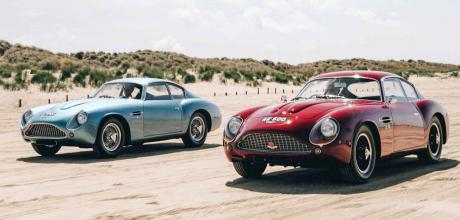1962 and 1963 Aston Martin DB4 GT Zagato
To own an Aston Martin DB4GT Zagato is a privilege. To own two, well… Octane.
Words Glen Waddington
Photography David Roscoe-Rutter
TWICE SMITTEN ASTON MARTIN DB4GT ZAGATO
A brace of Britain's most desirable beauties
How Italy turned the DB4GT into a motoring legend - and how one man has owned seven of the 19 built
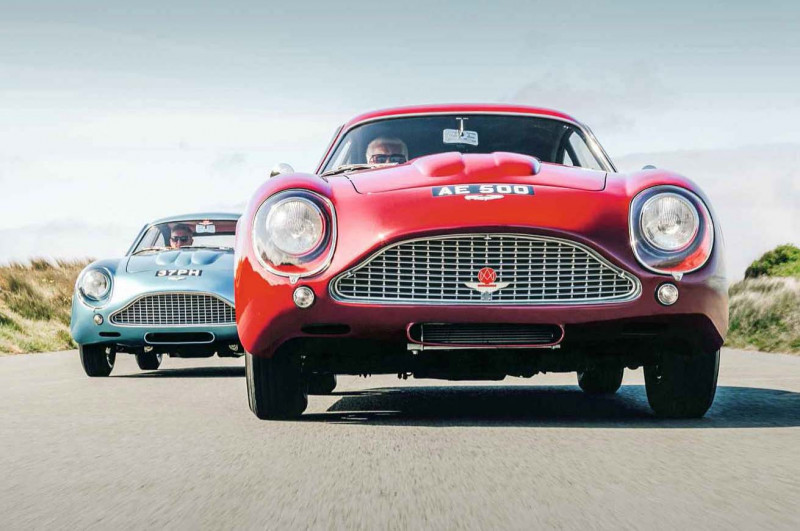
First, a conundrum. Chassis number 0176/R is numerically the first of the DB4GT Zagato breed but it was not the first car built. That was DB4GT/0200/R, actually the last in numerical sequence (to satisfy homologation requirements). In the event, 0176 was the sixth built and one of the last sold. And although 25 had been slated for construction by Zagato, only 19 were completed (one of them, in effect, twice).
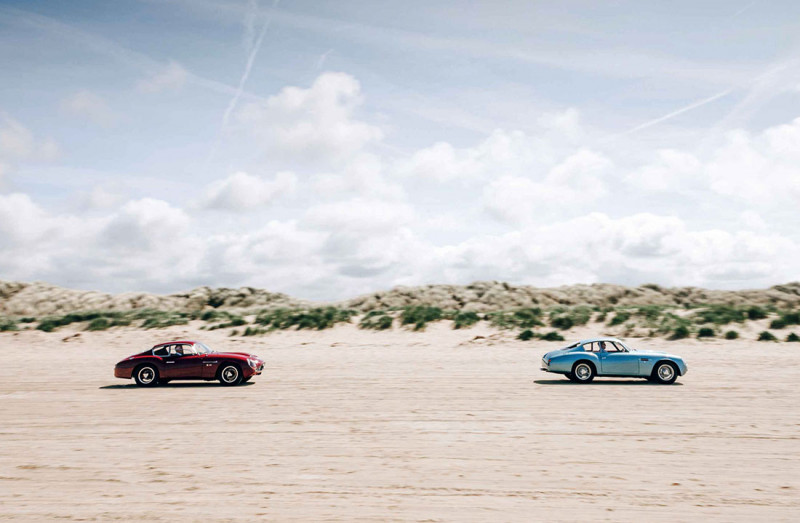
Here you see 0176/R (dark red, or ‘Peony’, the only Zagato in that colour) alongside 0189/R, the last of those 19 (in Caribbean Pearl). And while they each have a tale to tell, what is remarkable on first acquaintance is that both belong to one man. In the six decades since those 19 cars were built, this same man has owned no fewer than seven of them. It’s not something he boasts about, it is merely a fact of William Loughran’s life as a longstanding dealer, collector and aficionado. After all, these cars have a history of mixed fortunes, going right back to that conundrum.
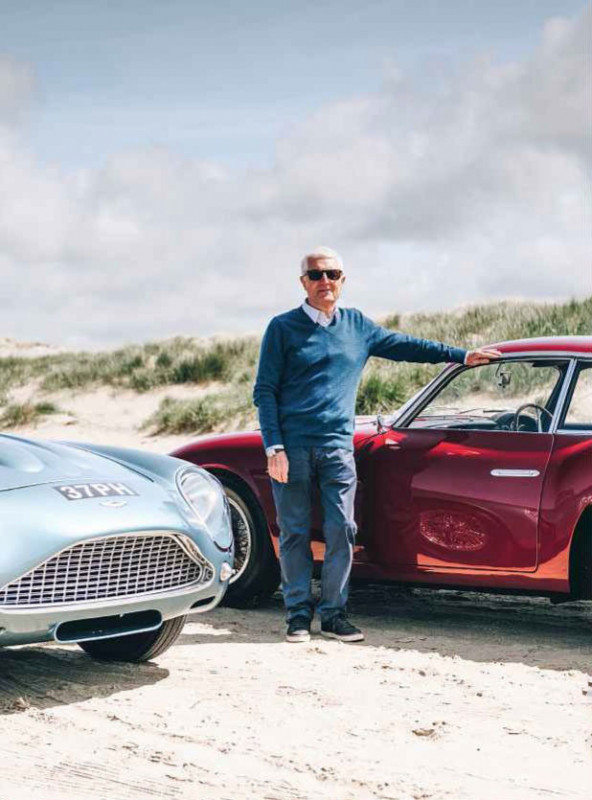
Aston Martin struggled to sell some of them, which is why the world had to wait until 1991 for the ‘Sanction II’ series built at the behest of the then-boss of Aston Martin, Victor Gauntlet!: they used chassis numbers 0192, 0196, 0197 and 0198, which had been allocated though not built when the DB4 was superseded in 1963.
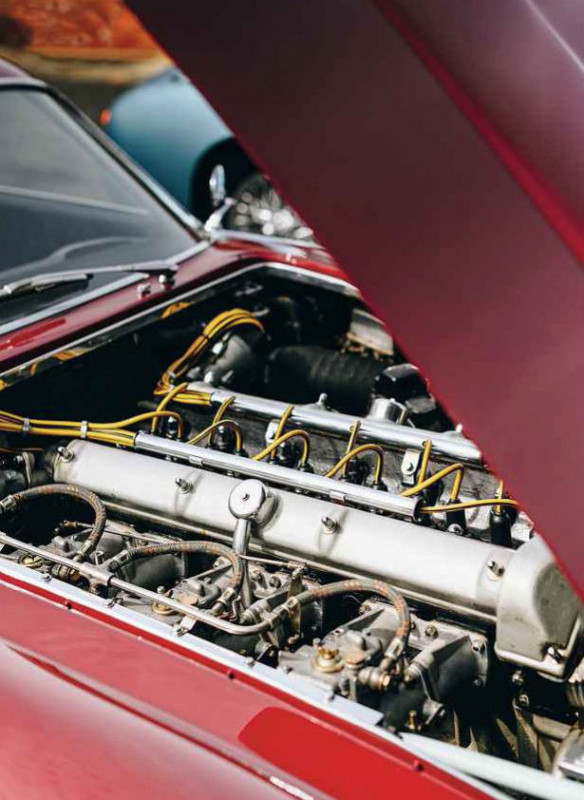
Equally, William Loughran has significant future plans for these cars, and they involve him rather less. ‘Why two? I have two children,’ he says, disarmingly.
We’ll come back to William’s story in a while. For now, some more about these arresting-looking cars. Aston Martin’s long association with Zagato began here, the first car introduced at the London Motor Show in October 1960 following a brief from company owner David Brown for a lighter, sleeker version of the short-wheelbase DB4GT for racing. It would face stiff competition in the likes of the Ferrari 250GT SWB Berlinetta and rely on Astons existing twin-cam straight-six, albeit tweaked for additional power.
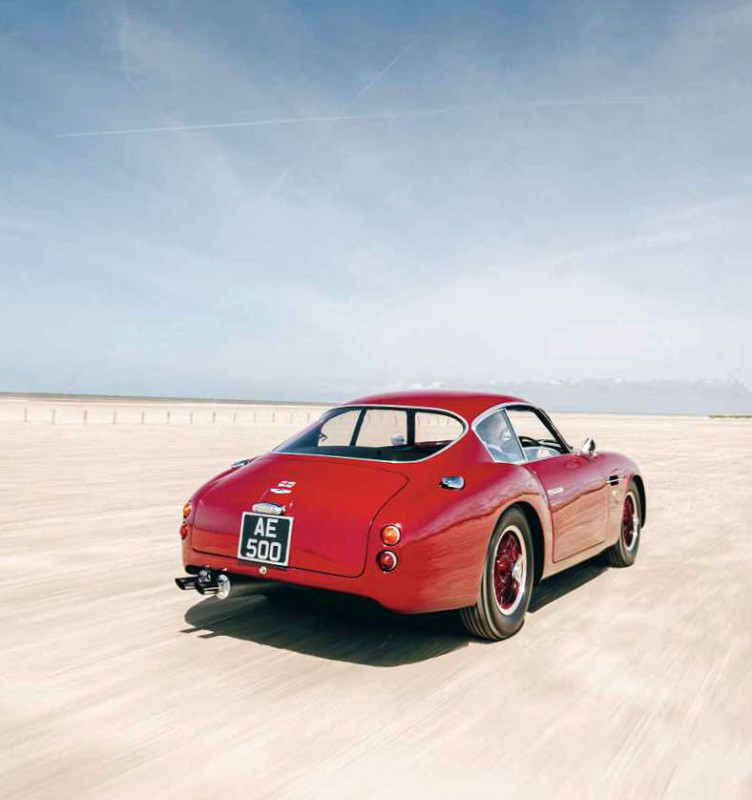
So it was no small undertaking for Zagato’s recently employed Ercole Spada, who re-drew the DB4 with more rounded forms (though the characteristic Zagato ‘double bubble’ roof is notably absent here), removing such non- essential items as the bumpers, and replacing many steel components with lighter, heat-resistant alloys. It was his first design, and he was just 23 years old. The body was wheeled and beaten from thin-gauge aluminium by Zagato’s skilled artisans, and glazing featured Perspex panels in place of glass where possible. The result was a saving of nearly 100kg over 1959’s DB4GT (75 made), itself already 75kg lighter than the DB4 saloon and sleeker, too, thanks to the fared-in headlamps of its Carrozzeria Touring body.
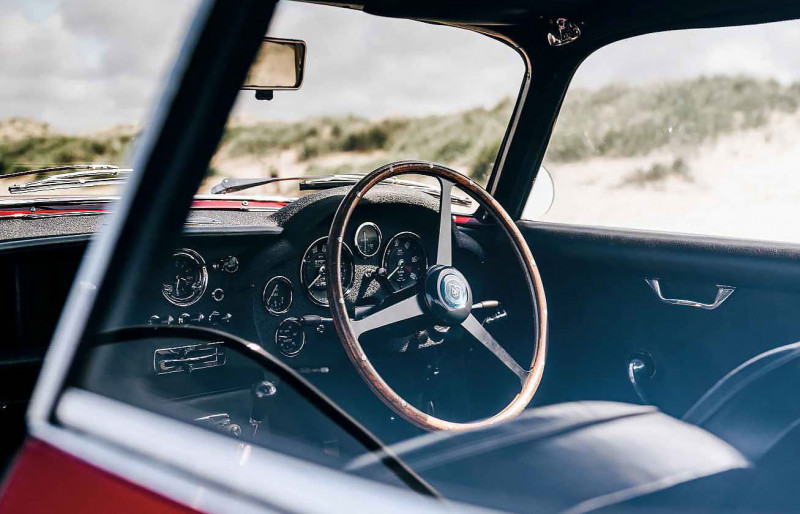
The standard DB4 was an innovative coupe, introduced in 1958 with a brand new engine designed by Tadek Marek, and featuring Touring’s Superleggera (‘super-lightweight’) construction method of a platform chassis with skeletal tubular supports for the outer panels. It had caused a sensation when it was unveiled at Earls Court — to have followed that with the GT a year later was audacious, but to do the same again in 1960 with the Zagato is indicative of David Brown’s intrepid ambition for his marque. Three truly iconic cars in a row, the last of which quickly passed into legend thanks to its rarity — and its majestically jolie laide body, which shrink-wrapped what lay beneath. Ownership is akin to being the custodian of a work of art.
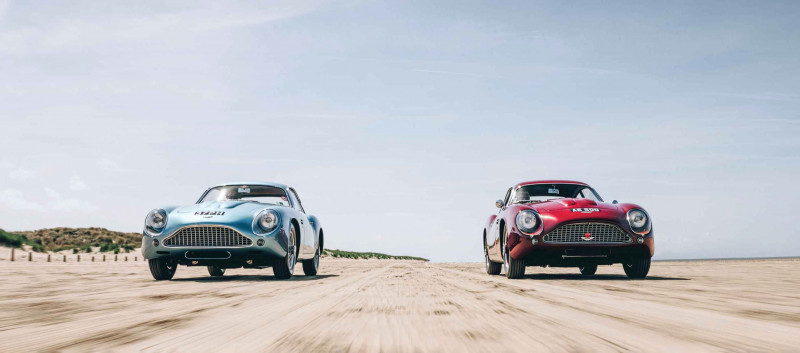
We should not forget that Aston Martin had won Le Mans in 1959 and that David Brown had ambitions to become a supplier of superlative customer cars, gentlemens racers for gentlemen racers, cars that could win on track and then drive back. And indeed, that very first car left Earls Court for Rob Walker’s racing team and headed to Goodwood for the Easter 1961 race meeting, the first outing for a Zagato. Stirling Moss brought it home in third place, behind a DB4GT — and the winning 250 SWB.
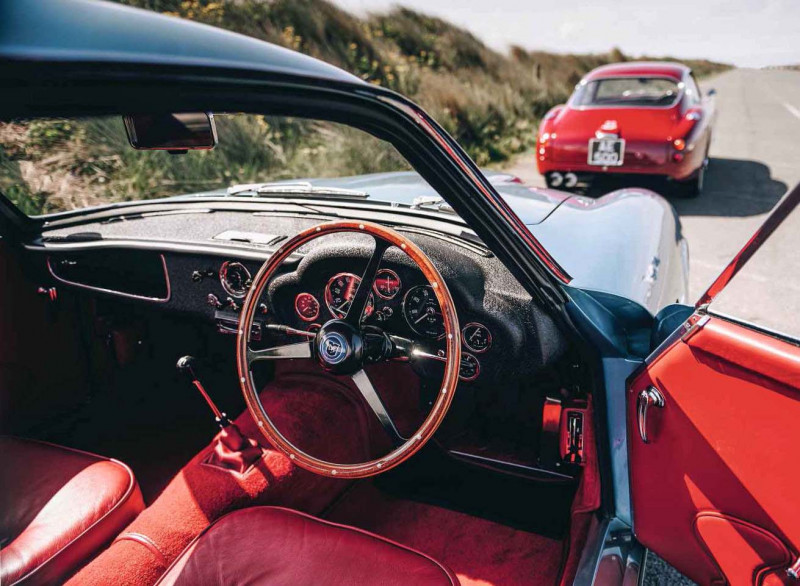
The Zagato raced more prominently as part of John Ogiers Essex Racing Stable, with works assistance and wearing the well-known 1 VEV and 2 VEV plates. Both cars raced at Le Mans in 1961, though they failed to finish. A win came when Lex Davison, in 2 VEV, overtook Jack Sears’ Coombs Jaguar E-type on the last lap of a British Grand Prix support race at Aintree. Jim Clark was notably flamboyant at Goodwood in 1962, drifting at heroically unlikely angles in 2 VEV (same plate, though the car had re-emerged as one of three super-lightweight’ cars following Lucien Bianchi’s accident at Spa) — until he took out John Surtees’ 250 GTO at Madgwick. Robin Benson then crashed into them both, in the ex-Moss 1961 TT-winning 250 SWB.
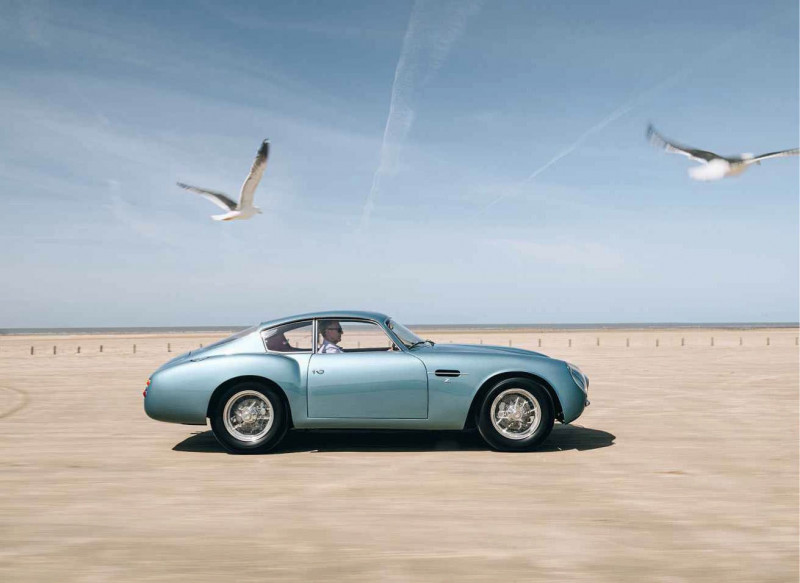
So, the Zagato wasn’t quite the success on track that had been hoped for. Time had moved on. Yet there’s no doubt that it played hard and fast against the competition, its brawny 3.7-litre straight-six hardly outclassed by the 250 SWB’s classical 3.0-litre V12. And it ended up being rarer than planned because Aston Martin, fearing that it couldn’t sell all the cars it had planned, foreshortened the production run. Chassis 0176/R and 0189/R were among several cars sold to London dealer HWM at a discount as a job lot. If you’d ordered one from Earls Court at launch in I960, you’d have been expected to pay £5470. Ogier paid £8672 for his pair of racers, a 20% discount. Bear in mind that it would have taken £4534 to buy a DB4GT; only half that amount put you into an E-type.
It was always a spectacular car, though, enjoyed by Aston Martin aficionados and club racers throughout the 1960s and 1970s before becoming better known as a collectable car in the 1980s. The DB4GT Zagato is a true exotic.

Chassis 0176/R was sold by HWM to Edward Beck in 1962. He’d part-exchanged an AC Aceca for it, and took it back to his home on the Isle of Man, where it stayed for 17 years. It was fastidiously maintained during that time; Beck had it fitted with modified DB4 bumpers, in an effort to protect the bodywork, as well as DB4GT seats, more comfortable than the vestigial Zagato semi-buckets. Later owners include Aston Martin chairman Victor Gauntlet! (1980-1982), and then the meat magnate and collector Paul Vestey, who removed its bumpers.
‘David Brown had ambitions to supply gentlemen’s racers for gentlemen racers, cars that could win on track and then drive back’
Dealer Duncan Hamilton brokered a sale in 1984 that saw European collector Hubert Fabri take ownership, and he became the longest-standing Zagato owner before selling to William Loughran last year. Importantly, 0176/R has never been damaged on track, and nor has it ever been the subject of a full restoration. Fabri even commissioned a scratchbuilt model of it, which William also now has.
‘It’s such an original car, I’ve known it for a long time. It’s very special and it’s the seventh Zagato I’ve owned. The first I bought was 1 VEV, 20-odd years ago at a Donington auction, Robert Brooks was the auctioneer. I knew they were good, everyone was taking about this one. I sold it on — then bought it back two years later and kept it for another 12 years. People had told me I was crazy for selling it, that I'd never have another, but I got three quite quickly after that. Sometimes these things just fall into place. You need to be able to jump in and buy, wherever the car is — that’s how deals are done. And not everything can be sold on quickly. You have to want to do it and have the means to do it.’
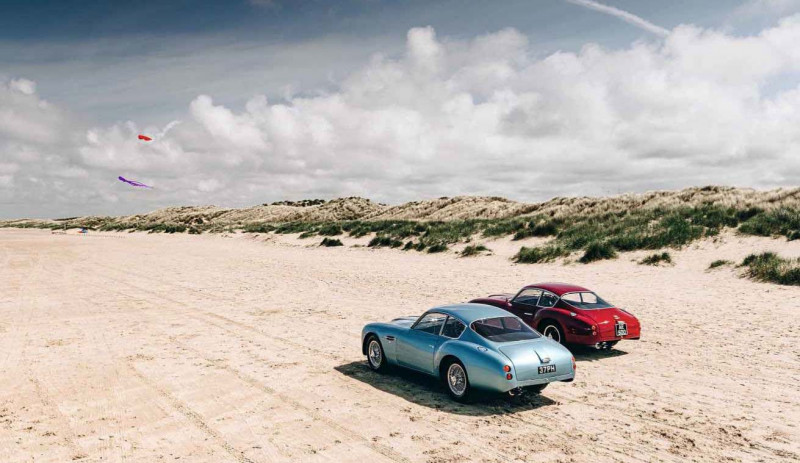
William began his career aged 19, in the late 1960s, at a property in Lancashire owned by his parents. He’s still based there. ‘I believe it’s lucky for me,’ he says. ‘Customers come here from around the world. It’s important to meet face-to- face. And a lot of collectors like to be based in England for the European events.’
He has become known particularly for Ferraris — most of the good ones, especially the SWBs’, he says. ‘I’ve helped to make the prices for them over the years. And I think I’ve handled more Aston Zagatos than anyone. I decided when my father died that I’d like to buy and sell cars, and I liked the good cars of the day. I’d buy them and some thought I’d lose money, but they turned out to be a good buy. Back in the day, some rare and special cars were worth so little, people had no idea they’d ever be worth anything. I took notice of what other collectors were doing, realised that values move through peaks and plateaus. Sometimes you have to wait, either to buy or to sell.’
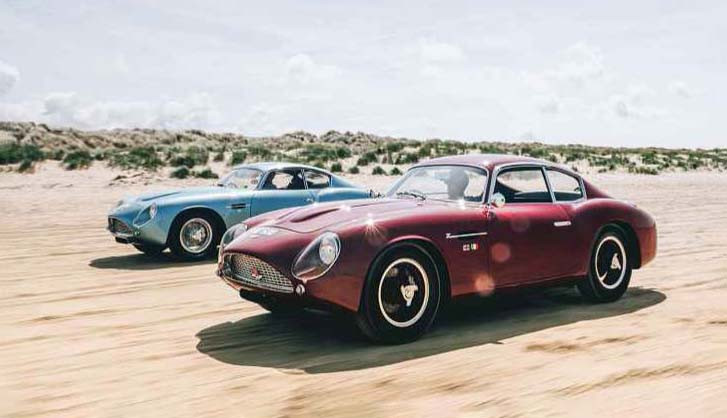
William bought the blue car in 2010, and it’s different in several respects from the red one. ‘These cars are handbuilt, you can’t take a part from one and fit it to another,’ he says, and you can spot the pull-handle door releases on 0176/R, in contrast to the O ring and button on 0189/R. An unusual aspect of its early history is that this car had covered 227 miles and suffered accident damage (immediately repaired) even before it was delivered to HWM in 1962. Likewise, it was painted and trimmed in Britain, unlike all but two other Zagatos, which explains the British-market-friendly blue over red hide, rather than the Italian-finished deep red over black hide of 0176/R.
Yet the differences go beyond the literal: 0189/R was restored by Aston Martin Works before William bought it, to original spec, and it has a freshness that contrasts markedly with the incredible (and utterly delightful) patination of 0176/R. During Williams tenure it has appeared at notable concours events, including Concorso d’Eleganza Villa d’Este (2011), Kuwait (2012, where it won two awards), Salon Prive (2014, a class win) and the 2012 Windsor Castle Concours of Elegance. ‘I’m especially proud of that,’ says William. ‘It was a landmark event and the Aston was one of only 60 cars there. It was an incredible privilege to be invited to be in the inner quadrangle alongside the best-known collectors in the world.’
Horsham-based SWJ Miller was 0189/R’s first owner; his company Southern Organs was a prominent motorsport sponsor, but it collapsed and prompted the sale of the car back to HWM, which sold it on to Ken Hobbs in 1967 (for just £1500). Hobbs competed in the AMOC Wiscombe hillclimb and widened the wheelarches to accommodate fatter tyres. The car then spent half the 1970s in South Africa, competing regularly at Kyalami, and undergoing more than one colour change. Back in the UK from 1976, it went through four owners before heading out to Germany, competing in the 1983 Oldtimer Grand Prix at Hockenheim, driven by none other than rally ace Walter Rohrl. He blew up the engine during practice...
Prominent British dealer and racer Frank Sytner owned the car from 1984 to 1986, though it was unfortunately crashed into a ditch by the delivery driver en route to his base in Nottingham. It then went through several more owners during the late-1980s classic car boom, becoming the most frequently traded DB4 Zagato in the process.
Swiss dealer Lukas Hiini sold the car to a Dutch owner in 1995, who commissioned Aston Martin Works to carry out a full restoration back to its factory specification and colour scheme. It was even returned to its original 37 PH registration number. The car took part in the Pebble Beach Concours d’Elegance in 1998 and was bought by William 12 years later. It remains in perfect condition.
Both the cars are original in spec, one a 100-point restoration, the other a preservation. Each is powered (correctly) by the Marek 3.7-litre twin-cam straight-six, offering a full-fat 314bhp thanks to triple Webers. I take the blue one first.
Even clicking open the lightweight door is an event. Double-jointed knees would be good for squeezing between the wood-rimmed three-spoke wheel and the slim, spare, lightweight Zagato seat. It’s airy in here, with a great view out, and few sights are as heart-warming as the trad Aston crackle-black dash. A tiny ignition key fires that six into life with startling immediacy; it settles to a burbling, percussive idle. Into first with a snick, pull away and you’re aware of tingling feedback, rapid steering response, and a lack of inertia. The Zagato feels extremely light on its feet.
The ride is firm, and bumps elicit a few bonks and clonks — not from the body, which feels superbly taut, but simply the effect of competition breeding, where ultimate refinement is traded for fidelity. Gathering speed through the gears reveals a mechanically smooth and rewarding shift that needs little in the way of familiarity, though third will have to do for now — there are only four ratios to deal with accelerating to a top speed of 154mph. The noise is glorious, enveloping you with a brassy howl as it reaches a crescendo. Every point of contact connects you directly to the action.
The Zagato moves around, making tiny corrections necessary at the wheel, though think immersive interaction rather than nervousness. We’ll blame the crossplies and, anyway, the more speed you carry, the better it feels, becoming ever more alive and responsive. Steering is a revelation, so much more alert than you might expect of an early-1960s car, thanks largely to it being a rack-and-pinion system rather than an old-fashioned box, and turn-in is immediate and rewarding. Even at 50mph on a public road. No wonder Jim Clark had such fun at Goodwood.
‘They’re like racehorses,’ says William, after we’ve pulled in to swap cars. ‘Not so good at going slowly, they really need some revs to clear the throat and then they’re wonderful.’ On the evidence so far, he’s not wrong.
It’s interesting to see the two side-by-side. There’s something about the deep red finish and matching wheels of 0176/R that brings out the Italian essence of the DB4 Zagato’s body. Sure, some of the usual Aston cues are present, not least the grille shape, which is exaggerated here, but the overall form has a holistic character, best understood as a unified entity rather than the sum of its potentially discordant elements. The demure colour scheme helps.
I pull the slimline door release and settle into 0176/R’s plumper seat. A combination of that, thicker padding to the doortops and older, supple, creased black leather makes the red car feel so much more intimate, even though it’s the same view over the dash and there’s just as much glazing.
The steering wheel shows more evidence of use and history than the blue car’s, likewise the gearknob, the shift pattern on which is gently worn and faded. That 3.7-litre straight-six is just as athletic, though here it sounds a little smoother, vocal elements to the fore and dominating the mechanical backdrop. The ride is softer, too, better flattening some of the vagaries of British road surfaces that caused a slight crashiness in the blue car. That softness can mean there’s a little less immediacy in corners, and the steering is slightly heavier, too, but I suspect that, for a properly long drive, say, over the Alps or across France, this car would be a more laid-back option than the tauter, more alert 0189/R.
Over to William for a last word or two. ‘I believe in these cars, my kids love them, too. They’re great things that I’ll be handing on to them. I believe they have a big upside to come, in terms of values. Cars have been good to me and they’ll be good to my family.’
And which does he prefer? ‘Today, it’s the blue one — but tomorrow it could just as easily be the other.’
I can certainly understand that: the lightness of touch and quickness in response make 0189/R the perfect partner, especially for a shorter trip, but whether it’s a better car than the red one is anything but clear. The charm of 0176/R’s patination and its mellower character, the knowledge that it is largely as built and that it wears its 50,000 miles with such honesty make it very special. It’s not ‘as new’, but my word it’s been cherished.
So my answer would be that both these cars appeal enormously, and in many different ways. It’s fair to say that having the luxury of choosing either is a very desirable position indeed.
THANKS TO William Loughran, williamloughran.co.uk.
TECHNICAL DATA 1962 and 1963 Aston Martin DB4 GT Zagato
- Engine 3670cc DOHC straight-six, three Weber 45DCOE4 carburettors
- Max Power 314bhp @ 6000rpm
- Max Torque 278lb ft @ 5400rpm
- Transmission Four-speed manual, rear-wheel drive
- Steering Rack and pinion
- Suspension Front: double wishbones, coil springs, telescopic dampers, anti-roll bar. Rear: live axle, trailing links, Watt's linkage, coil springs, lever-arm dampers brakes Girling discs
- Weight 1229kg
- Top speed 154mph
- Acceleration 0-60mph 6.1sec
Above and below Chassis 0189/R was restored by Aston Works before being shown at Pebble Beach in 1998 — and it remains in superlative condition; lightweight Zagato bucket seats characterise the Italian take on a British cabin.
Clockwise, from above Zagato shape is especially lean when seen from the rear; mellow interior of the highly original 0176/R: twin-cam straight-six is a tour de force; William Loughran with two of the seven Zagatos he's owned.
‘Not one, but two! Incredibly beautiful GTs yet with a surprisingly raw sports car feel, these two very special Astons drew plenty of attention and were a dream to shoot. I'll take one.' David's superb photography accompanies Glen Waddington s Aston Martin DB4GT Zagato feature on pages.
Celebrating a pair of unsung heroes
If the Aston Martin DB4GT Zagato isn’t Britain’s most expensive road car, then it must be there or thereabouts, presumably sparring with the XKSS for top spot in price and rarity. I can’t think of many others to rival the Ercole Spada-penned beauty that don’t have a significantly more racy bias. To see just one of these 20-off (if you ignore the seasonal raft of ‘Sanction’ cars) rarities anywhere, even static on a concours field, is a major event.
So how about two of the lightened and tightened Zagato masterpieces doing what they were designed to do and being driven? And for good measure let’s do some of that driving on a beach in north-west England in spring, when the weather hasn’t yet decided whether it wants to cling on to winter or slide into summer. Pretty special - probably unique - stuff and all very Octane, yet the fact that this story happened at all also says a great deal about long-serving classic car dealer and industry disciple William Loughran. He owns both cars and that’s pretty much unheard of.
To give you a left-field insight into the man, many of you will know that Octane is the power behind the Historic Motoring Awards. Well, a couple of years ago we wanted to introduce a new award to recognise someone who had navigated the classic car industry for a lifetime with barely a blemish to their name, someone who was not just an ambassador but could be held up as a beacon of honesty, devotion and good practice. We struggled with a name for the gong. It started off plainly as The Integrity Award and ended up morphing into the Classic Car Ambassador of the Year, which embodied the sentiment but was very slightly different. What remained constant throughout, though, was the single criterion for the winner and, in the words of Octane’s Sanjay Seetanah, it should be ‘someone like William Loughran’.
Talking of Sanjay, just last month in this column I briefly mentioned our everpresent advertising team, the dark ops of Octane led by Sanjay from Issue One. Well, such was the reader response that you can find out a lot more about him this month. In response to overwhelming reader demand we’ve made him the subject of Autobiography (basically the old Day In The Life page, but with less cereal and Horlicks) so you can all see what makes him tick - and why he is as passionate about classic cars as anyone on the editorial team.


